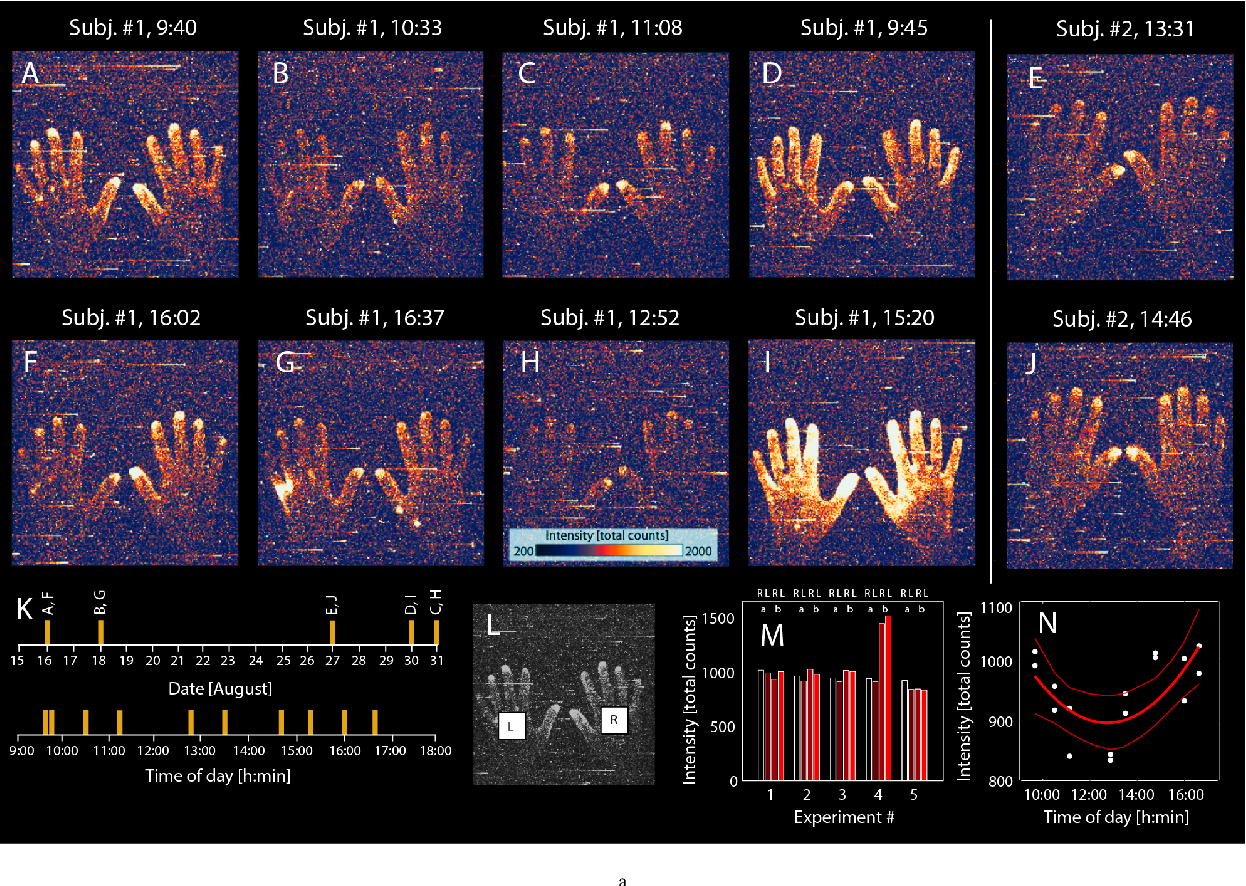Where Do BioPhotons Exist in the Body, and What Is Their Function?
BioPhoton emissions have been detected throughout the human body – essentially any living tissue can emit this faint light. However, our skin is the most readily observed source, since photons can escape the body there. In fact, Popp demonstrated a “biophoton cloud” around organisms and showed that humans continuously emanate ultra-weak light from the skin surface.
This light is thought to originate at least partly from cellular DNA and other biomolecules releasing stored energy as photons. Experiments imaging humans in complete darkness (with sensitive cameras) have managed to capture faint biophoton glows from the hands and body, confirming that we literally glow at an imperceptible level.
Higher metabolic activity appears to correlate with higher biophoton output; for instance, the human brain, which consumes a lot of energy, emits more UPE than many other tissues. One study in 2025 noted that the brain’s ultra-weak emissions fluctuated with neural activity and proposed that these signals (in the UV–near-infrared range) might be explored as a non-invasive window into brain function and disorders.
Functionally, why do cells emit light? The conservative view is that biophotons are merely a side-effect of biochemistry – for example, reactive oxygen species in cells create excited molecules that relax by emitting photons. However, scientists have hypothesized intriguing roles for these biophotons. One idea is that they form a subtle communication network within and between cells.
Because biophoton emission can be coherent (synchronized like laser light) in healthy organisms, some researchers (Popp and others) suggest this could enable an ultra-fast, holistic signaling system in addition to chemical signals. In Popp’s view, the body’s cells use this light-based communication to regulate and coordinate biological processes, and a loss of biophoton coherence may correspond to illness. Indeed, preliminary studies have found that the pattern of UPE can vary with circadian rhythms, stress, and disease states. For example, damaged or diseased cells often show higher or more chaotic photon emission (indicating oxidative stress), whereas healthy cells emit light in more regular rhythms.
It’s important to note that these functional interpretations are still theoretical and under investigation. Mainstream science hasn’t fully confirmed that biophotons carry meaningful information in vivo – they could very well be simply a natural glow from metabolism. That said, the fact that death or severe damage causes biophoton emission to cease or spike (plants produce a burst of light when stressed or dying) suggests that UPE correlates with vital processes.
In summary, biophotons exist in all parts of the body (wherever cells respire, photons are emitted), and their hypothesized function ranges from being mere metabolic noise to potentially acting as a biological communication system. Ongoing research is exploring uses of these ultra-weak light signals for monitoring health (for instance, detecting diseases via changes in photon emission) and understanding the fundamental “light-based” aspect of our physiology.


